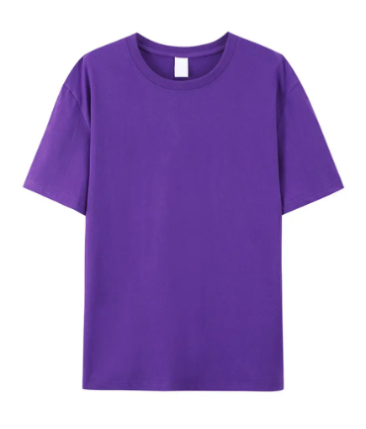Check Care Labels & Sort by Fabric Type
Decoding Care Label Symbols
Knowing what those little symbols on care labels mean makes all the difference when it comes to keeping sweatshirts looking good after washing. They actually tell us important stuff about how to handle different fabrics properly through washing, drying, and even ironing if needed. When someone takes the time to learn what each symbol stands for, they're able to stop accidental damage while preserving both color brightness and original shape of their favorite sweats. Take temperature warnings for example many people overlook them but ignoring those could lead to colors running or fabric shrinking unexpectedly down the road.
Separating Cotton, Polyester, and Blends
Sorting clothes properly according to fabric matters a lot when it comes to getting good results from washing sweatshirts. Cotton feels nice but tends to shrink when washed wrong, so extra care is needed with this material. Polyester stands up better to regular washing cycles and doesn't shrink as much. Mixing different fabrics in one load actually helps preserve their quality and makes them last longer overall. Knowing how each fabric behaves under normal washing conditions lets anyone wash their sweatshirts right, keeping them feeling good and looking presentable for many months down the road.
Pre-Treat Stains & Use Cold Water
Spot-Cleaning Techniques for Tough Stains
Keeping sweatshirts looking good requires some decent spot cleaning when needed. The easiest way to tackle minor stains is to put a bit of regular laundry detergent right on the problem spot and work it in gently with fingers or a soft rag. Works pretty well for stuff like food spills or dirt marks most of the time. When dealing with tougher messes like oil stains or ink smudges though, basic detergent might not cut it. Specialized products come in handy here. Oxi based cleaners tend to handle grass stains and muddy patches much better than ordinary soap. Enzyme formulas are what folks usually reach for when tackling blood spots or other protein based stains. Give whatever cleaner was used about five minutes to do its job before tossing the garment into the washer. This extra wait time really makes a difference in getting those stubborn marks out completely.
Why Cold Water Preserves Color and Shape
Washing sweatshirts in cold water really makes a big difference when it comes to keeping colors looking good and maintaining proper fit. Hot water tends to make fabric fibers contract, something that usually results in unwanted shrinkage over time. Colored clothing stays brighter too because cold water doesn't let dyes bleed out as much. The American Cleaning Institute did some research showing that using cold water is easier on fabrics while cutting down energy usage around 90 percent compared to warm or hot cycles. So switching to cold water saves money on utility bills and keeps clothes in better condition longer. Plus, every load washed this way does its part for the planet without anyone even noticing the environmental benefit.
Reducing Friction with Inside-Out Washing
Flipping sweatshirts inside out before tossing them in the washer might seem like a small thing, but it works wonders for keeping them looking good longer. The main reason? It cuts down on all that rubbing against other clothes during the wash cycle, which means less wear and tear on the outside fabric. When the inside faces outward instead, those pesky pills don't form so easily either, and colors stay brighter too. Most laundry experts will tell anyone who asks about caring for cotton blends that this little move really pays off over time. Think about how many times we've pulled out an old favorite only to find it looks worn beyond belief after just a few washes. Making sure the inner layer takes the brunt of the beating keeps our sweaters looking newer for months at a stretch.
Choosing Color-Safe or Mild Detergents
Choosing the correct detergent matters a lot when it comes to washing sweatshirts. Factors such as color safety and how gentle the product is become important considerations for preserving fabric quality. Strong chemical formulas tend to cause problems over time, resulting in colors that fade or fabrics that break down. Mild detergents clean effectively while still being kind to the material itself. There are actually special detergents made for sensitive fabrics that work wonders on delicate items without all those aggressive ingredients typically found in regular laundry products. Going with these types of detergents helps keep sweatshirts looking bright and feeling soft, so they stay both comfortable to wear and visually appealing after multiple washes.
Air Dry Strategically to Avoid Shrinking
Lay Flat vs. Hanging: Best Practices
Want to stop those sweatshirts from shrinking? The way we lay them out makes all the difference. Flat is actually better than hanging if we want to keep our favorite hoodies looking good. When clothes lie flat, they don't sag or stretch out of shape because the weight distributes evenly across the fabric. This matters especially with stretchier stuff like wool blends or some synthetics that just don't hold up well when left to hang. Cotton sweats tend to handle hanging better since they're less prone to stretching anyway. Most folks who work with fabrics say leaving space between items when hanging helps air flow around everything properly. Clothes dry faster this way too, which means less wear and tear on the material over time. Follow these tips and most people find their sweatshirts stay looking great for much longer periods.
Avoiding Direct Sunlight for Color Retention
Leaving sweatshirts out in direct sun often causes colors to fade faster than we'd like and weakens the fabric itself. The sun's UV rays actually start breaking down those fibers, which makes colors look duller and the material feel less sturdy. A study from the Journal of Textiles backs this up, showing how long exposure to sunlight really takes a toll on fabrics, particularly when they're colored. If we want our sweatshirts to stay looking good, drying them away from direct sunlight makes sense. Try hanging them somewhere shady outside or inside where there's decent airflow. Garage corners or covered patios work great for this. Getting rid of direct sun helps keep those colors bright for longer, so our favorite hoodies don't end up looking worn out after just a few washes.
Store Properly for Long-Term Freshness
Folding vs. Hanging: Preventing Stretching
Want to keep sweatshirts looking good for longer? Storage matters quite a bit. For heavier stuff like fleeces, folding works better than hanging since it stops them from stretching out over time. Lighter fabrics can go on hangers, though make sure to grab some wider ones so shoulders don't get those annoying bumps where the garment sags down. The way I fold mine? Lay it flat first, work out any wrinkles, tuck in the sleeves, then fold the whole thing in half maybe twice if the material feels thick enough. Doing this keeps everything shaped properly without bunching up weirdly later on. Plus, clothes just feel nicer when they're stored right, not all crumpled up at the back of a closet somewhere.
Using Breathable Storage to Prevent Mildew
Good storage practices help maintain the shape of sweatshirts while preventing mold growth and dampness issues. Cotton or canvas bins work best because they let air flow through, which keeps things from getting too humid inside. Vacuum sealed bags might save some space but actually trap moisture over time so they're not great for storing clothes long term. Throw in some cedar blocks or silica gel packets somewhere in the storage area to soak up any extra moisture and keep bugs away. The ideal place to store these items should stay cool with decent airflow. Humidity shouldn't get too high either, though exact numbers aren't always necessary. Just making sure the environment isn't overly damp will go a long way toward keeping those sweaters looking good and feeling comfortable whenever someone wants to wear them again.
FAQ Section
Why is it important to check care labels?
Care labels provide essential guidance on washing, drying, and ironing instructions specific to different fabrics, helping to prevent damage and maintain the vibrancy of your garments.
Can all types of stains be removed with regular detergent?
Not all stains can be treated with regular detergent. For tough stains like grease or ink, specialized stain removers or enzyme-based detergents may be required.
Why is washing in cold water recommended?
Cold water washing reduces the chances of fabric fibers contracting, preserving the garment's color and shape while decreasing energy consumption by about 90% compared to warm water.
What is the benefit of turning sweatshirts inside out before washing?
This reduces friction and protects the exterior fabric from pilling and fading, helping to maintain the appearance and prolong the life of the garment.



